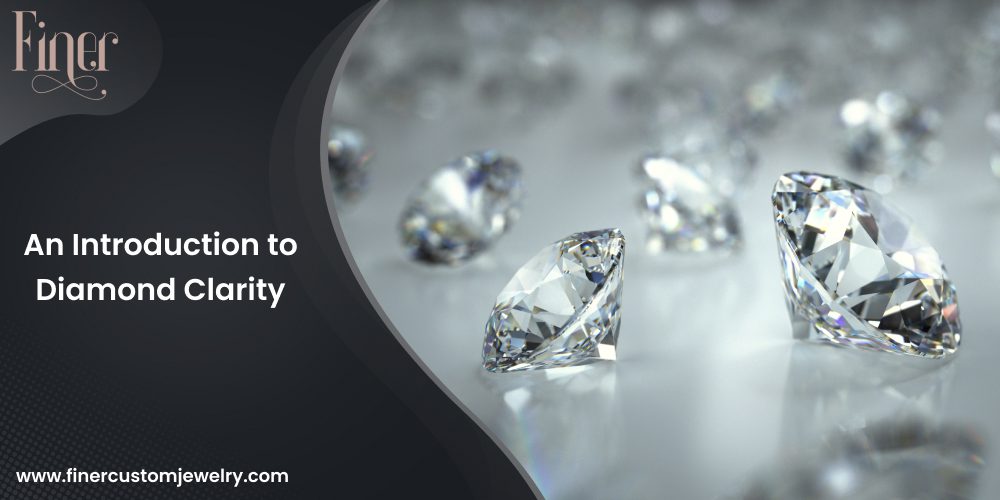Diamond clarity is one of the four quality factors (the 4Cs) that describe and determine the worth of a diamond. By definition, clarity means ?a gemstone?s relative freedom from inclusions and imperfection.? These two terms are locational- imperfection is found on the outside of the stone and inclusions are located on the inside. Both of these clarity characteristics can feeble the brilliance of a diamond, though some are so minute that they are invisible to the bare eye.
Both inclusions and imperfection appear in a diamond at different stages of a diamond?s formation. Inclusions may be present from a diamond?s creation, whereas imperfection may appear during cutting, setting, or even the wearing of a diamond and Custom Jewelry.

There are many different kinds of inclusions, also known as internal clarity traits. Small crystals can become stuck within diamonds as they grow under intense heat and pressure. Large numbers of these precious stones must be checked whether the jewel is learned at 10 x amplification. Graining is a clarity feature that occurs when a diamond’s atomic structure is irregular. Graining appears as a series of faint lines and or streak. Internal breaks may occur during or after the formation of a diamond. Because of their feathery looks, these breaks are referred to as ??feathers?.
Imperfection occurs after a diamond?s composition, during the cutting, mounting, and wearing of a polished diamond. Extra facets, polish lines, or burns are examples of blemishes introduced during the production process. Imperfections introduced during the handling, mounting, or wearing of a diamond include nicks, scratches, cracks, and abrasions. Chips are shallow openings where part of the diamond was broken off, most often at the sash edge.
Numerous incorporations and Imperfections are too little to even consider being seen by anybody other than a prepared precious stone grader.. In some cases, a diamond’s transparency, or the lack of any blemishes or inclusions, may be flawless in certain instances. Since rarity and value are related, diamonds with flawless clarity are incredibly rare and thus, the most valuable of all diamonds.
HOW ARE CLARITY GRADES DETERMINED?
When determining the clarity of diamonds, specialists will note the appearance of the diamond when it is face-up, with a microscope at 10x magnification and eye visibility. However, a higher magnification than 10x would be used to detect any diamond inclusions. otherwise determining it could be too complicated.
Five factors play an important role in how the clarity points are determined. The size, shape, number, place, and relief of the inclusions are the five elements in diamond grading.
Size
The size of the inclusion is important because the larger the inclusion, the bigger impact the inclusion will have on the diamond?s clarity points.
Nature
The nature of the inclusion is simply concerning the type of inclusion that is present. It also discusses the depth and any other traits that can be found within the diamond. If there is anything that is situated only on the surface of the diamond and has not perforated the diamond, then it is referred to as an imperfect, rather than inclusion.
Number
The clarity point of a diamond will be much lesser when there is the presence of several different clarity traits.
Location
The location of inclusion on the diamond is referred to as its position. If the inclusion is situated in closer proximity to the center of the table, then the clarity point will be impacted much more.
If the inclusion is close to the sash, which is much further from the center table, then the inclusion may be harder to see. Inclusions near the diamond’s pavilions will reflect, and the facets will act as mirrors, allowing the inclusion to be mirrored.
Relief
The relief is referring to how perceptible the inclusion is in contrast to the host diamond. The more the relief, the darker the color may seem which can affect diamond grading.

As the editor of the blog, She curate insightful content that sparks curiosity and fosters learning. With a passion for storytelling and a keen eye for detail, she strive to bring diverse perspectives and engaging narratives to readers, ensuring every piece informs, inspires, and enriches.









